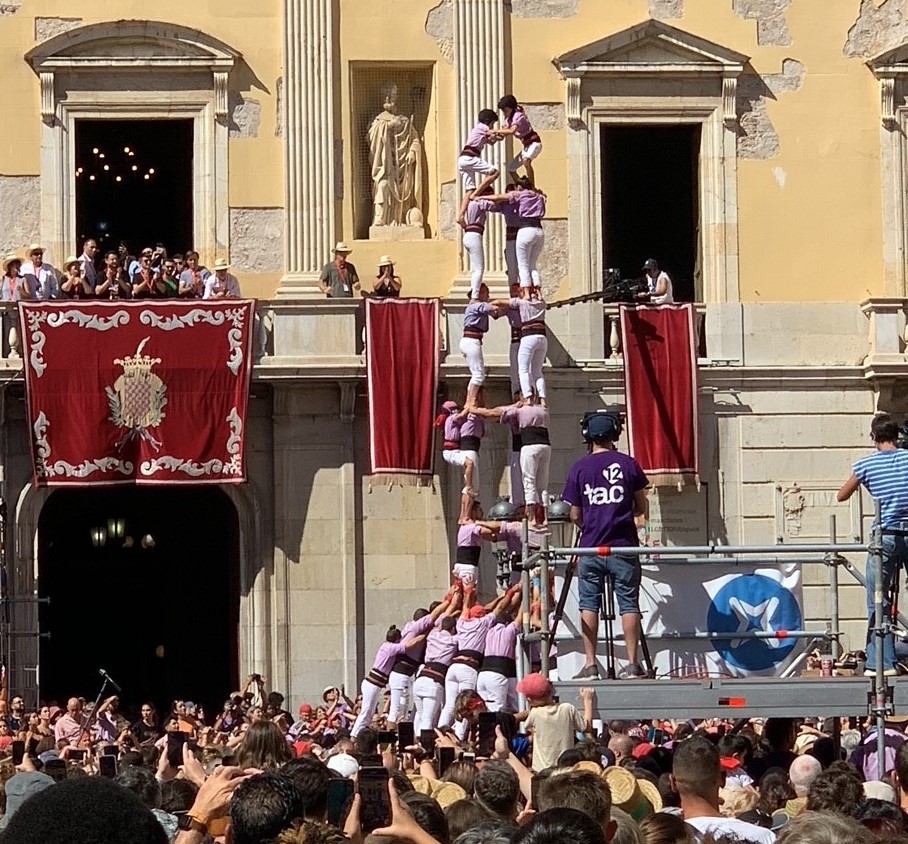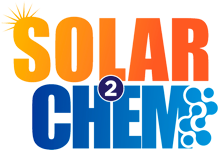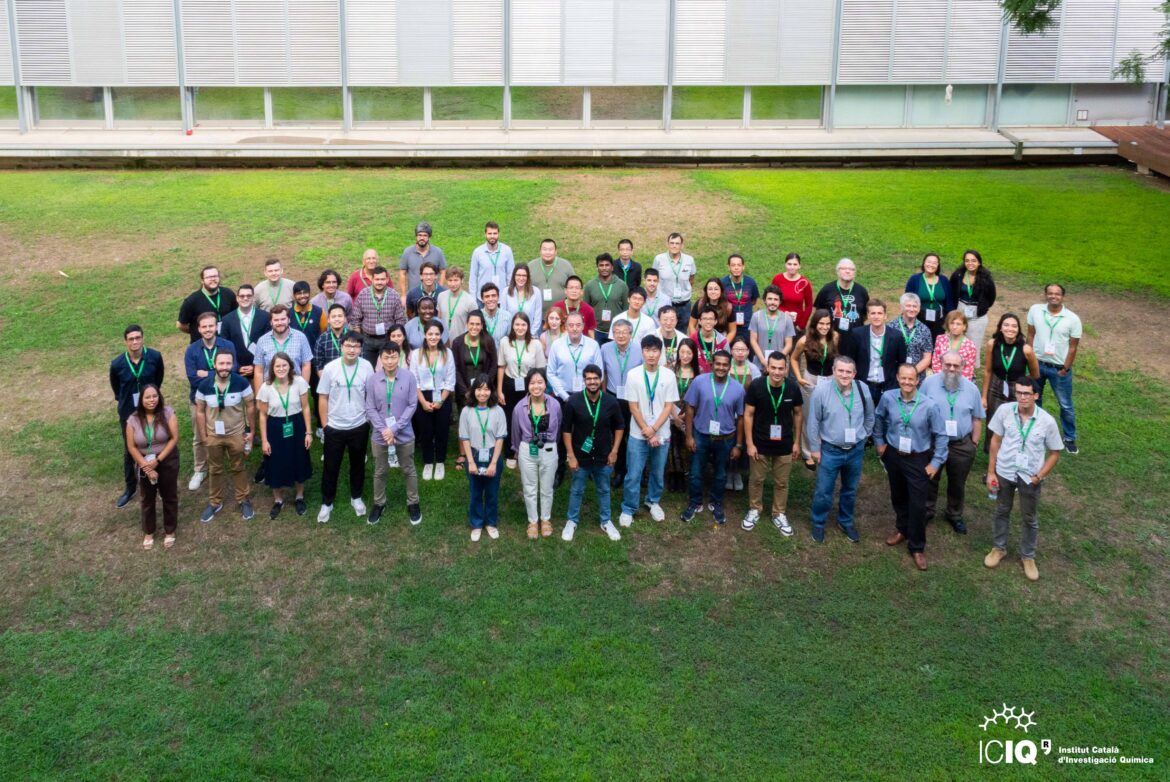Solar2Chem Conference at ICIQ (Tarragona)
The Solar2Chem ESRs, with the help of Institut Català d’Investigació Quimica (ICIQ), have successfully launched the Solar2Chem International Conference #S2CIC in Tarragona (Spain) last 18th – 22nd of September 2023. The event spanned five days, encompassing a variety of exciting activities: scientific talks, group discussions, workshops, awards, poster sessions, but also a piano concert from one of the ESRs and the celebrations of Santa Tecla Festival in Tarragona.
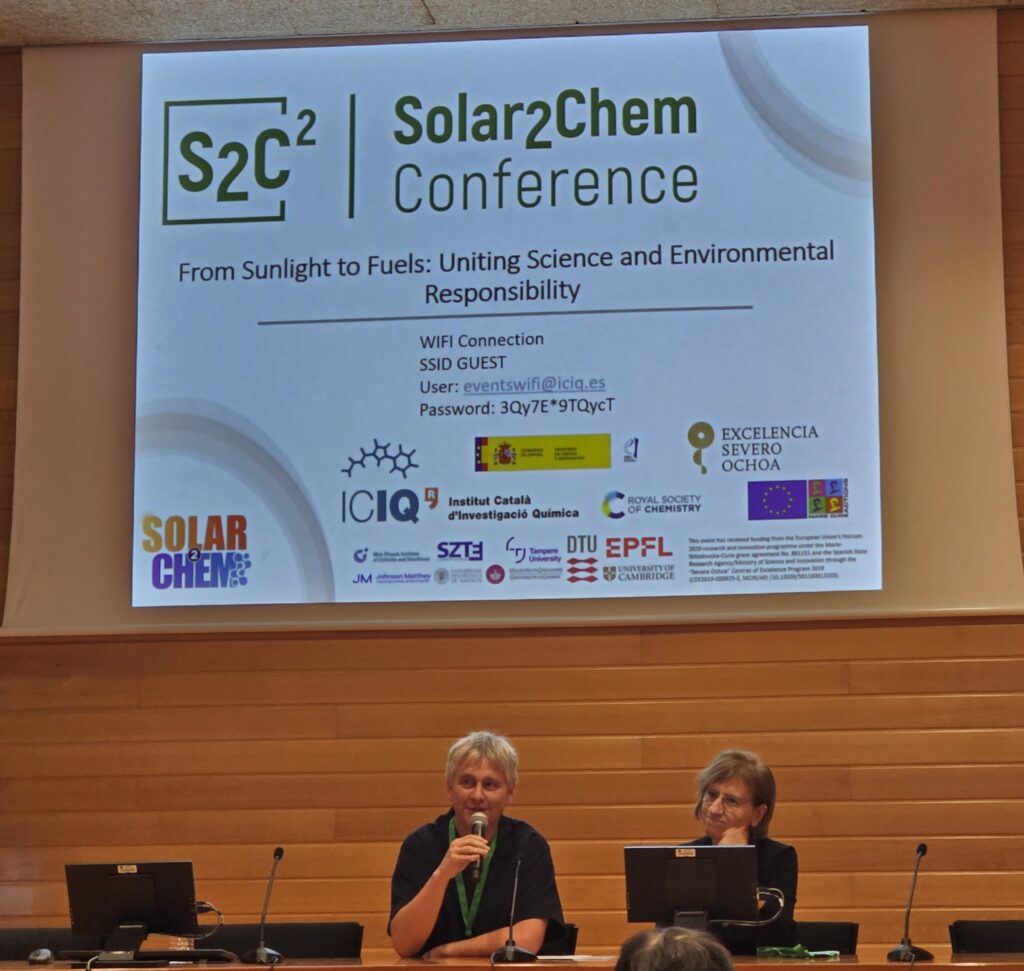
The scientific talks were given by pioneering experts of the field in photocatalysis and photo-electrocatalysis. A warm welcome remark was given by Prof. Núria López, our ICIQ partner Professor, Prof. Emilio Palomares, ICIQ Director, and Prof. Pau Farràs, the coordinator of the Solar2Chem project. Prof. Harry Atwater of California Institute of Technology and Liquid Sunlight Alliance (LISA), a partner of Solar2Chem, opened the floor for scientific discussions with his talk “Coupled Microenvironment Artificial Photosynthetic Systems for Liquid Solar Fuels“. He discussed the strategies that LISA has been exploring to further photo-electrochemical conversion research. After a question from the audience about the motivation for doing PEC research, Prof. Atwater gave his confident answer about the future possibilities of PEC research within the community, especially in areas that have not yet been explored. This was followed by a short presentation by Sebastiano Gadolini, our ESR from Johnson Matthey, where he formally introduced the Solar2Chem Project and Consortium to the audience.
The second day started with an invited speaker from the industry, giving an overview of “Fuel Development for the Future Maritime Fleet“. Dr. Jacob Hjerrild Zeuthen from Maersk, Denmark discussed how solar-to-fuels technology can enter the industrial landscape in the perspective of alternative fuels for maritime transportation. After lunch, a representative of the Royal Society of Chemistry discussed how the RSC is “Transforming the Energy Publishing Landscape — RSC’s Mission to Advance Excellence in the Chemical Sciences“. In the late afternoon, a keynote presentation was given by Prof. Kazunari Domen of University of Tokyo, Japan & Shinshu University on “Photocatalytic Water Splitting and Green Hydrogen and Fuels Production Systems“. As one of the pioneers in the field of photocatalysis, he also showed a functional PEC plant in Japan where they produce green hydrogen in large scale, discussing the constraints and the challenges involved.
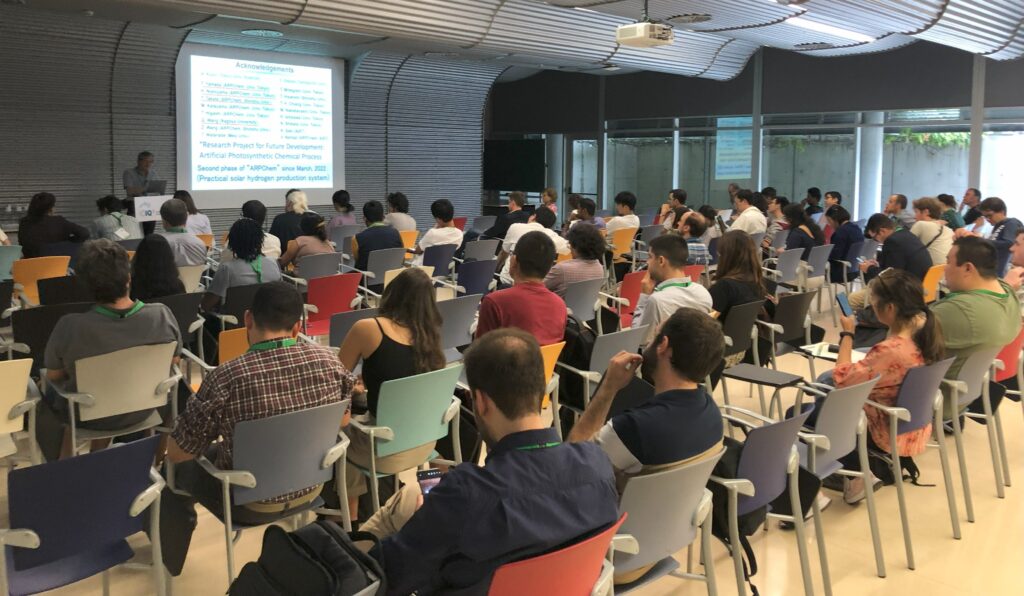
Prof. Beatriz Roldán Cuenya of Fritz Haber Institute of the Max Planck kicked off the third day with her keynote presentation on “Beyond Static Models: Dynamics in Interfacial Catalysis“. With her expertise in advanced characterization techniques for catalysis, she imparted key insights about the real dynamic state of these catalysts during operation. At the latter part of the day, Prof. Timothy Noël from the University of Amsterdam gave a different perspective in his keynote presentation entitled “From Batch to Flow: Advancing Synthetic Organic Chemistry through Technological Innovation“. He proposed how to exploit light, flow chemistry, and machine learning in transforming the landscape for organic chemistry in the synthesis of specialty chemicals, not just fuels. The day concluded with a delightful surprise as Pavle Nikačević, an ESR from ICIQ and one of the conference organizers, showcased his musical prowess in a captivating piano concert entitled “The PhD Sonata“, demonstrating that the conference on sustainable fuels was not only an intellectual exchange but also a celebration of diverse talents, harmonizing science and art.
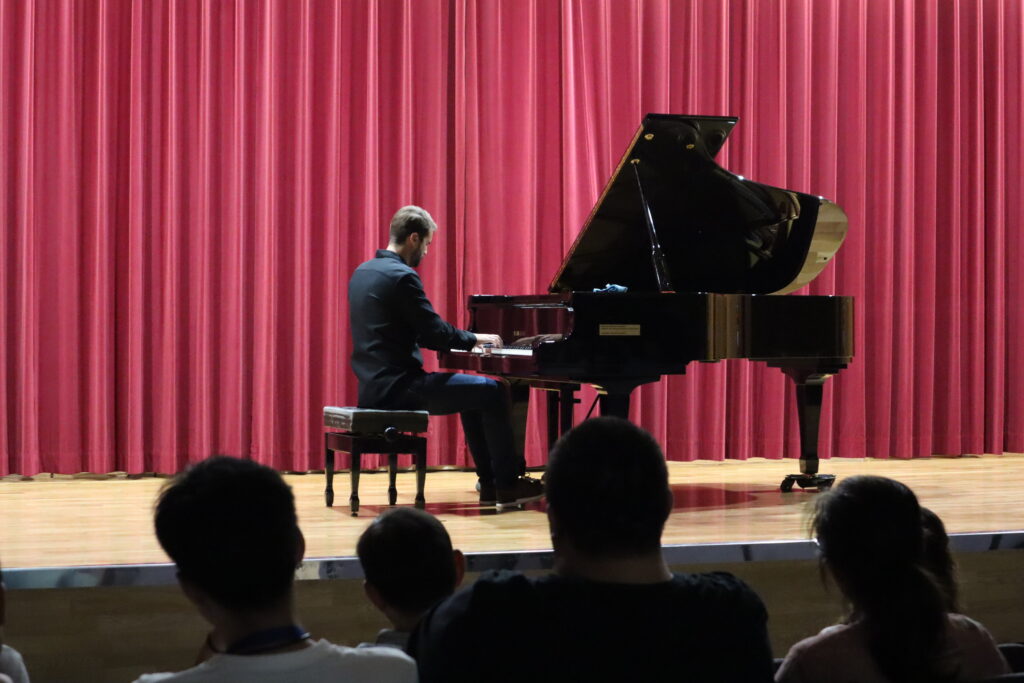
The fourth day began with a keynote presentation from Prof. José Ramón Galán-Mascarós of ICIQ with his talk on “Oxidation Catalysis and Renewable Fuels: Challenges and Beyond“. He reminded the community about the challenging oxidation half-reaction and how his group is trying to solve it. With his talk, the scientific part of the keynote presentations ended, and the schedule proceeded with presentations on Policy. Dr. Philippe Schild, Senior expert from the European Commission, discussed “Research and Innovation on Solar Fuels and Chemicals: Mission Innovation and the European Viewpoint“, while Dr. Luigi Crema, the Hydrogen Europe Research President, presented his talk on “Hydrogen Europe Research and the Priorities for the Direct Solar Hydrogen Production“.
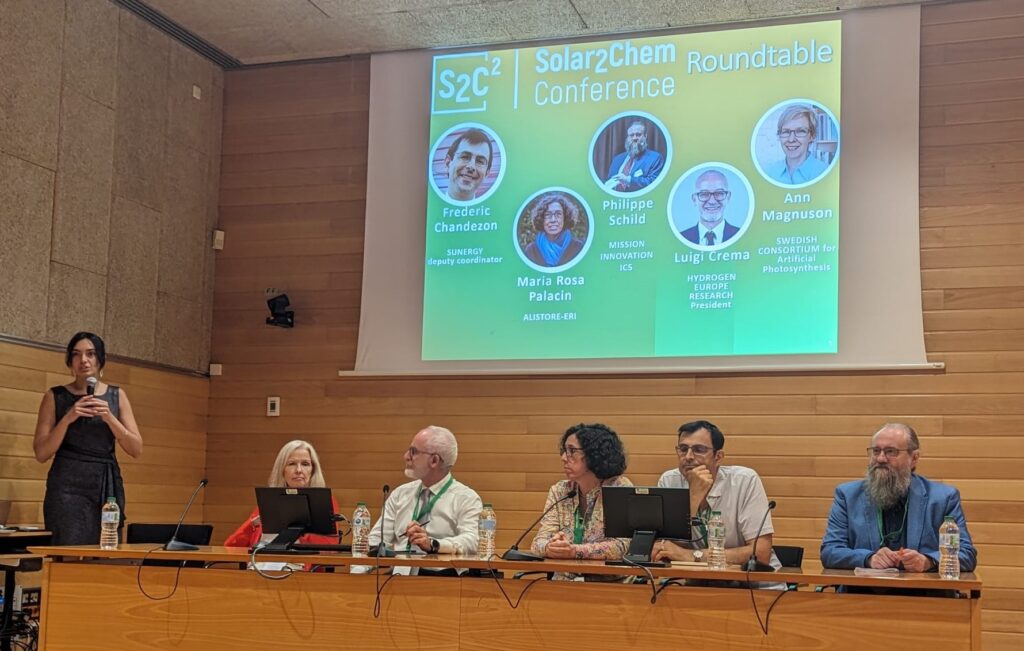
During the last two days, the focus shifted towards the Policy aspect of Solar-to-chemicals where a workshop and roundtable panel discussion were held and were moderated by one of the ESRs, Júlia T. M. Machado from University of Galway. The workshop focused on “Future of Solar Chemicals and Fuels”. The panelists were Joan G. Fabra (ICIQ alumnus from EU Commission, Political Landscape), Prof. J.R. Galán-Mascarós (Technology Development), and Dr. Jacob Zeuthen (Industrial landscape). Then, the roundtable “Solar Chemicals and Fuels Cluster” with the previous speakers Luigi Crema and Philippe Schild, with Ann Magnuson of the Swedish Consortium for Artificial Photosynthesis, Frédéric Chandezon from SUNERGY, and Maria Rosa Palacin from the International Battery Association.
Aside from these, all 15 Solar2Chem ESRs presented their work orally: Francesca Lorenzutti of École Polytechnique Fédérale de Lausanne “Multiscale Modelling of the Cation Effect in Electrochemical CO2 Reduction“; Alexey Galushchinskiy of Max Planck Institute of Colloids and Interfaces “Carbon Nitrides in Net-Oxidative and Net-Neutral Organic Photocatalysis“; Sebastiano Gadolini of Johnson Matthey “Post-synthetic Modifications of Graphitic Carbon Nitride for Selective Organic Transformations“; Roberto Valenza of École Polytechnique Fédérale de Lausanne “High-throughput Parallel Testing of Ten PEC Cells for Water Splitting: Temperature Effect in Sn-doped Hematite Photoanodes“; Muhammad Saad Naeem of Institut Català d’Investigació Quimica “Computational and Experimental Ion Transport Study of Polyether Based Liquid Crystalline Membranes“; Kathrin Naumann from Technical University of Denmark “Limitations of Titanium Dioxide and Copper for Photo-Electrochemical Carbon Monoxide Reduction” Maryam Toufani from University of Galway “Exploring the Role of Different Morphologies of Β-Ni(OH)2 for Electrocatalytic Urea Oxidation and the Effects of Electrochemically Active Surface Area“; Huanyu Ding from University of Galway “Design of Ruthenium Tetradentate Aminopyridine Light-Driven Catalyst for Selective Epoxidations“; Pavle Nikačević from Institut Català d’Investigació Quimica “Atomistic Insights into Photocatalytic Mechanisms: Modeling Selected Processes with Density Functional Theory“; Carolina Pulignani of University of Cambridge “Rational Design of Carbon Nitride Photoelectrodes with High Activity Toward Organic Oxidations“; John Mark Christian M. Dela Cruz from University of Szeged “Photoelectrochemical CO2 Reduction on Au-decorated Sb2Se3 Photocathodes“; Xiangtian Chen from University of Szeged “The Effect of Single Crystal TiO2/Perovskite Band Alignment on the Kinetics of Electron Extraction“; Jokotadeola Odutola from Tampere University “Interfacial Photo-Generated Carrier Dynamics of Graphitic Carbon-based Photocatalysts for Solar-to-Chemical Energy Conversion“; Horațiu Szalad from Universitat Politècnica de València “Supported Ru Photothermal Catalyst for CO2 Hydrogenation: Influence of Irradiation Power on CO and CH4 Product Distribution“; and Júlia T. M. Machado from University of Galway “The National Shaping of Europe’s Emerging Hydrogen Strategies: Cooperative or Competitive Hydrogen Politics?“.
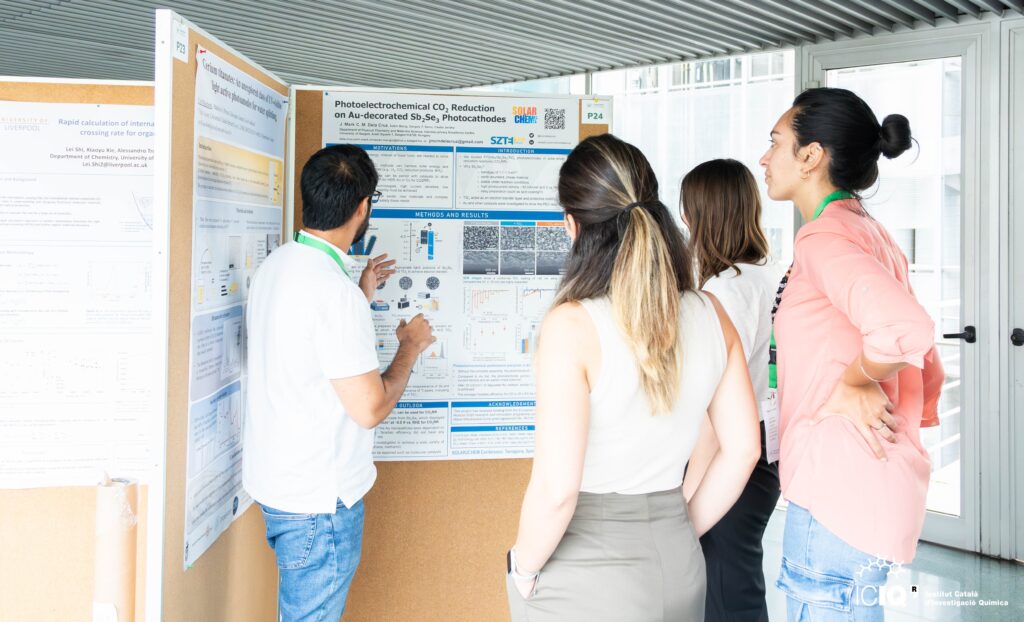
Throughout the week, various presentations were given by attendees through an oral or poster presentations. The event concluded with closing remarks from Prof. Núria López and Prof. Pau Farràs, after the awarding ceremony of the poster awards and scholarships. The best posters were given to three outstanding PhD students: Enric Ibáñez Alé of ICIQ, Eva Jie Yun Ng Leon of Institute of Advanced Materials – UJI Castelló (INAM UJI), and Hanka Besic of University of Galway. The RSC also granted scholarships to two deserving students: Jing Yang from University of Liverpool and Samiksha Mukesh Jain from INAM UJI. Lastly, the ESRs and the attendees enjoyed the conference simultaneously with festivities during the week of Santa Tecla celebration in Tarragona, Spain.
